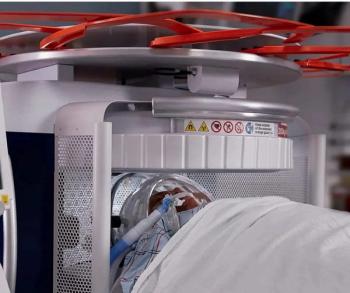
Diagnostic Imaging Europe
- Diagnostic Imaging Europe Vol 26 No 1
- Volume 26
- Issue 1
MRI reveals brain damage in retired athletes
The brains of 24 retired U.S. National Football League players with known cognitive impairment show signs of damaging atrophy, according to advanced MRI studies described at the 2009 RSNA annual meeting.
The brains of 24 retired U.S. National Football League players with known cognitive impairment show signs of damaging atrophy, according to advanced MRI studies described at the 2009 RSNA annual meeting.
Songyuan Tang, Ph.D., a postdoctoral researcher associated with University of North Carolina's Biomedical Research Imaging Center, presented preliminary imaging findings that represent the latest steps in research by principal investigator Kevin Guskiewicz, Ph.D., to study the relationship between football-related concussions and cognitive and behavioral problems that emerge long after the men's playing days are over. The findings were drawn from ongoing research conducted by Guskiewicz and colleagues at UNC's Center for the Study of Retired Athletes.
Guskiewicz first drew interest to football-related concussions and dementia in 2005 with a study suggesting that a history of three or more concussions was associated with an increased risk of cognitive impairment by age 50. An autopsy study, published by a different group in 2005, found concentrations of tau protein suggesting dementia in the brains of eight of nine former football players.
Guskiewicz and colleagues also published a study of 2552 retired pro football players in 2007. It revealed that retired NFL players with a history of three of more concussions also had a threefold increased risk of clinical depression after the age of 50 compared with age-matched controls.
Results from Guskiewicz's group presented at the RSNA meeting don't bode well for the 24 retired NFL players, all over age 50, who volunteered for an imaging trial involving structural MRI and diffusion tensor imaging (DTI), an advanced MRI technique that maps connections between neurons. The brain studies of the retired players were compared with identical studies performed on 12 cognitively normal men in the same age group. The retired players had an average of 12 years of combined NFL and collegiate football experience.
Based on T1-weighted imaging, researchers found diffused atrophies in the whole brains of the players (see figure). Mild-to-moderate gray matter atrophy was identified in the eight brain regions for the former players.
In terms of white matter differences, fractional anisotropy DTI maps identified clusters of atrophy in five regions: the inferior frontal-occipital fasciculus, genu, sagittal stratum, posterior corona radiata, and splenium.
By applying fiber tractography to scans of one of the NFL subjects and a normal volunteer, researchers found a marked reduction in the number of fiber connections between neurons in the white matter of the left and right hemispheres of the former football player's brain. The affected regions included the genu, sagittal stratum, and splenium.
“Imaging addresses one piece of a larger puzzle,” Guskiewicz said in an interview. “Along with the behavioral and psychological testing we're doing, imaging is helping us improve football safety.”
Articles in this issue
over 14 years ago
Postprocedural complication of vertebroplastyalmost 16 years ago
First Eastern-based ECR president puts renewed emphasis on trainingalmost 16 years ago
Clinical context in reports helps to reduce errorsalmost 16 years ago
Image-guided spine intervention leads to back pain reliefalmost 16 years ago
Hospital finds outsourced data archive simple, cost-effectivealmost 16 years ago
Breathing new life into resuscitation trainingalmost 16 years ago
Europe stands firm as U.S. healthcare sector faltersalmost 16 years ago
Multislice SPECT/CT gains wider clinical acceptancealmost 16 years ago
Interventional radiology finds new patients in Jehovah’s Witnessesalmost 16 years ago
Studies show how breast ultrasound reduces unnecessary biopsiesNewsletter
Stay at the forefront of radiology with the Diagnostic Imaging newsletter, delivering the latest news, clinical insights, and imaging advancements for today’s radiologists.

























